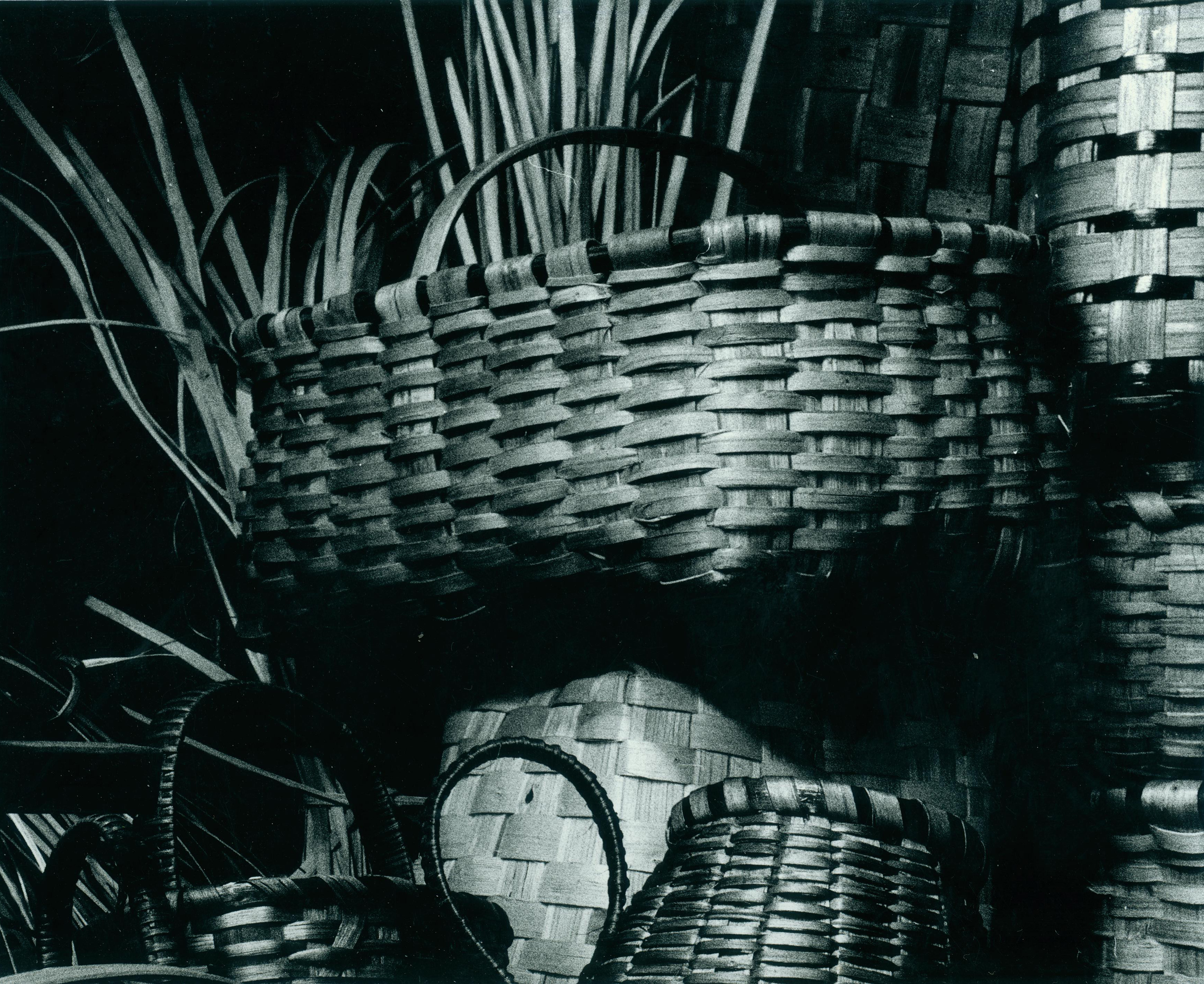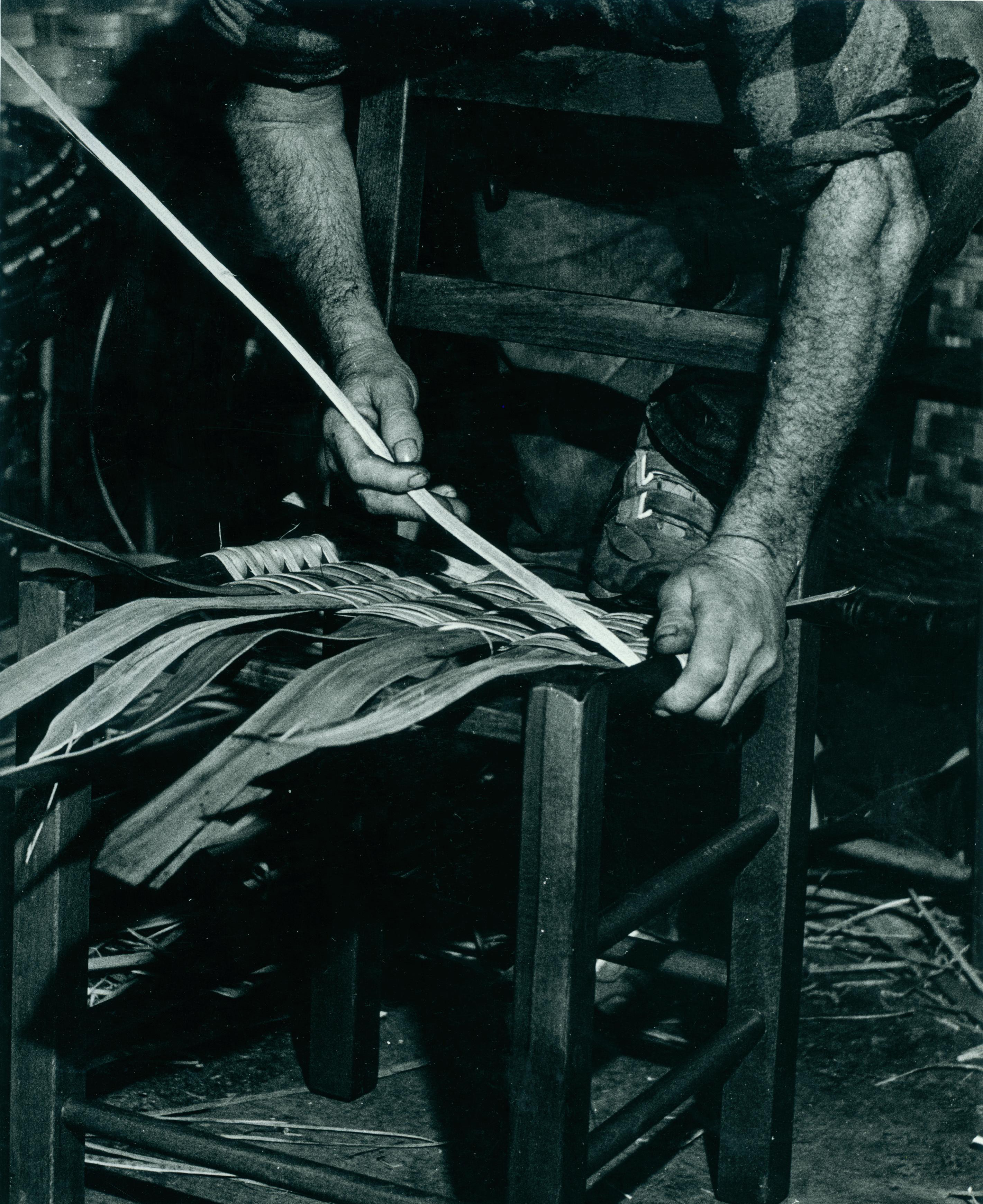Basque ethnography at a glance

Julián Redondo. Labayru Fundazioa Photographic Archive.
At this very difficult time that we are living in, the coronavirus spreading everywhere, people suffering severe confinement in their homes, and many of us having resorted to telecommuting as the better choice to continue with our jobs and activities, we wish to recall an age-old trade, which although practically lost today, like many other types of arts and crafts, would also be pursued at the artisan’s home workshop.
We are referring to basketmakers, otzaraginak, otzaragileak or zesteruak, who generally, to a greater or lesser extent, combined their handicraft with agricultural and farming chores, and transmitted their know-how from generation to generation.

Julián Redondo. Labayru Fundazioa Photographic Archive.
Basketry became vital to the survival of many a family towards the end of the 19th century and the beginning of the 20th, industrial development favouring an exponential growth of the trade, and demand for new forms of baskets soaring. Thus, basket-weaving communities and villages were born: among them, Oñati and Nuarbe, in Gipuzkoa, Mugika and Lezama, in Bizkaia, devoted to the provision of much-needed industrial baskets for containing and moving materials and merchandise at mines, forges, construction sites, preserve factories…, in addition to pieces to be used on the farm.
But several decades later that same progress which had helped in the development of the basketry tradition would restrict its scope and influence, new materials and modern manufacturing processes having come to reduce basket consumption, leading the art of the basketmaker close to extinction.
The workshop of the basketmaker was usually located near or adjoining the farm. Also needed were an oven to season the wood —the bread oven served the purpose— and a well where to soak for two or three years that which would eventually be used as raw material.
The utensils of the basket weaver were rather simple and rudimentary: a wooden bench —so called astoa—, a hatchet, a blade with two handles at the sides, an awl, a mallet, a knife for sharpening the wooden rods, a hammer, and a few small nails for holding the basket together.

Julián Redondo. Labayru Fundazioa Photographic Archive.
There was a wide variety of creations, all of them associated with traditional ways of life: zaranak, multiple-purpose agricultural baskets; otzara zabalak, baskets for carrying farm products to the market, known as karpanak in some localities; astotzarak, donkey baskets or panniers; buruko-otzarak, baskets to be carried on the head; beso-otzarak, baskets to be hung by the arm; banastak, oversize baskets for transporting large goods, or poultry, also used for bread; perikitoak, smaller baskets; artzak, implements for winnowing and sieving cereal grain and pulses; talo-otzarak, platters for serving freshly made maize flatbreads; demijohn covers; fish traps; chairs and seats of different kinds and sizes; cradles… They could really make almost anything.
In the next post we shall account in greater detail for the traditional manufacturing process itself.
Akaitze Kamiruaga – Cultural Popular Heritage Department – Labayru Fundazioa
Translated by Jaione Bilbao – Ethnography Department – Labayru Fundazioa
The above-mentioned are field data gathered by the author; we shall likewise mention, as further references, La cestería del castaño en Durangaldea. Juan Unzueta [The weaving of chestnut wood strips in the region of Durango] by Xabier Amoros, edited by Arbaso (Association for the Promotion of Traditional Basque Basketry), Durango, 1998; and a remarkable research work on “Basketry in the Basque Country” presented by Karmele Goñi in a conference on ethnography celebrated in Portugal in 1966.


[…] Taking up where we left off in the previous post, we shall proceed to detail certain particulars about the art of basketry in the Basque Country, starting with the selection of raw materials and continuing with the manufacturing technique. […]